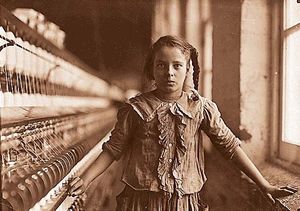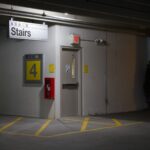The fire at the Triangle Shirtwaist Factory in New York City on March 25th, 1911, claimed 146 lives – mostly young immigrant women. Building owners locked the exit doors to keep the workers in and the union organizers out, so when a fire broke out on the 8th floor it was impossible for some of the 600+ workers on the 8th, 9th, and 10th floors to escape. The fire escape was not sufficient to hold the number of fleeing occupants, and collapsed. Firefighters’ ladders were several stories too short, and water from the fire hoses could not reach the upper floors of the building. Sixty workers jumped to their deaths.
This tragedy resulted in many code changes including fire-proofing, sprinklers, and improved exit procedures from high-rise buildings. The first New York City Bureau of Fire protection was created, better conditions for workers were initiated, and compulsory fire drills and sprinkler installation in factories were enforced. This fire eventually led to the development of NFPA 101, The Life Safety Code.
Here’s a short video about the fire, narrated by Triangle Fire survivors:
Here’s a page about the Triangle Shirtwaist Factory tragedy, with lots of photos and recorded eyewitness accounts.
And an article from a series on historic fires:
Deadliest: NYC’s Triangle Shirtwaist fire – Enid News
 Labor laws at the time required doors to open outward, if practical, according to the NFPA. The architect claimed the design was not practical in the Asch Building because the landing was only one stair width from the door. All doors had to open inward.
Labor laws at the time required doors to open outward, if practical, according to the NFPA. The architect claimed the design was not practical in the Asch Building because the landing was only one stair width from the door. All doors had to open inward.
Laws also required factory doors be kept unlocked during the workday.
Doors at the Triangle company reportedly were usually locked during the workday, according to the NFPA. The doors were kept locked to prevent workers from taking breaks or stealing materials from the factory.
Cutaway materials regularly accumulated on the factory floors.
“When last collected, an accumulation of 2,252 pounds of rags had been removed,” according to an NFPA report on the fire. “At the time of the fire, the rags had not been removed for about two months.”
Workers also were crowded together, working at long tables stretching the length of the factory floors.
“Aisles leading to exits were narrow and obstructed,” according to the NFPA report. “Partitions were placed in front of doors and elevators.”
In 1909, a fire insurance inspector recommended the factory doors be kept unlocked during the workday and the company conduct fire drills. The owners took no action on the recommendations.
You need to login or register to bookmark/favorite this content.






Leave A Comment